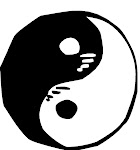The title of this post of course refers to the Joseph Campbell book of the same name. The beauty of mythology is that it usually says the same thing the world over.
Philosophers, mythologists, metaphysicians call this "perennial wisdom", the same wisdom that seems to surface periodically in mankind's history, and in nearly every culture. This gives it more weight because it's derived in diverse cultures which likely had little or no contact with others, such as prehistoric Norsemen and asian Indians. Coming to the same conclusions independently means that man is likely tapping into the same spiritual cognizance that is universal in nature.
Natalie Banks wrote a book called "The Golden Thread", which said that in the myth of Perseus and the Minotaur, the golden thread he left to find his way in the darkness and out of the labyrinth represents this commond thread of wisdom, "that holds all religions together like a strand of pearls", they are separate yet held by a common unifier, called perennial wisdom.
Everyone tends to get downright "nationalistic" about their own version of spiritual matters, even willing to kill over ideas of deity, the Supreme, the Creation. Many act like anyone's variation of the same story isn't valid due to some small (usually irrelevant) detail or even fallacy of historical fact. If anyone had "the truth", wouldn't it be indisputable by definition, and we'd all have it? Isn't that definition of truth, such as a scientific or historical fact? So, if its only your version of "truth", then that's simply opinion.
I've known Bible readers here in the south who claim that it is the only valid scripture "because it's the oldest written alphabet in the world". Sorry to dispel your logic, but Egyptians had hieroglyphics for thousands of years before there was Hebrew, even the Phoenician alphabet is 5000 yrs old. They've recently unearthed one older than that (a Phoenician 'translater' one was found that enabled them to decipher the older language) - clay tablets buried in the sand, which when deciphered were mostly business transactions. The first (and funny) one deciphered however, read, "Marry for pleasure, then get divorced when you've thought it over." The Tibetans claims to have been writing for 10,000 years.
If "age of myth" matters in importance, the aborigines in Australia have been telling the same stories orally for 50,000 years, and they claim (like the Egyptians) that mankind came here from Sirius, the Dog Star, which is only 6 light years away, making it one of the closest stars for travel (I beleive Alpha Centauri is only 4 light years away, the closest). Of course, the abos also claim the universe "was born on the back of a giant tortoise." Likely meaning slowly evolving over time, but they may mean it literally as well, and how can they be proven wrong? Where did the tortoise come from, if the universe wasn't here? (can also be said of "Jehovah"/Yahweh.) Seems if you understand logic, but this is a "faith" thing, right? beyond logic.. That's what makes voodoo work for some, psychiatrists say - simple "power of belief".
If age of deity is important, the first one worshipped was woman, who apparently brings forth all life on earth (about 50,000 b.c.) Next was the bear, apparently for hunting nomads, the most powerful beast they encountered, which had no enemies - therefore "king of the earth".
Here is a myth, often repeated, which may astound some people who have never heard of Joseph Campbell, watched his PBS specials or read his books, or studied mythology. Following this excerpt from my friend and British author Akin Nu An, is a link to his full story on these religious myths. Before you think your version is unique or was "first", you need to see the historical dates of all these other myths.
The Story Of Horus, 3000 b.c.
Horus was born on December 25th to the virgin Isis Mary. His birth was accompanied by a star in the east and upon his birth, he was adored by three kings. At the age of 12 he was personified as a teacher. At the age of 30 he was baptized by a figure named Anup and thus began his ministry. Horus had twelve disciples he travelled around with, performing miracles such as healing the sick and walking on water. He was known by many names including “The Truth”, “The Light”, Good Shepherd”, “Lamb of God”, “God’s Anointed one and many others. After being betrayed by Typho he was crucified, died for three days and thus resurrected.
Sound familiar? I was told that Horus bearing the sun gave us "hours". The above quote is from Akin's blog (read more!) about "The Journey to the Truth"
The Journey to the Truth
Note: There's a difference between blind faith worship and theology or the study of religions and mythology. If you are only interested in worship, if that is enough for you, then you're already doing all you need for yourself; this was my mother and many of her generation. Others seek a deeper knowledge and understanding of the mysteries of life. We will all come to our own personal conclusion about the spiritual and the Supreme and the nature of life, it seems to be an individual construction based on personal experience, self-examination, and education. For some it takes a lifetime of study; for others, their childhood instruction is enough. "Child is father to the man". (is that Blake?)
Saturday, May 2, 2009
Subscribe to:
Posts (Atom)






